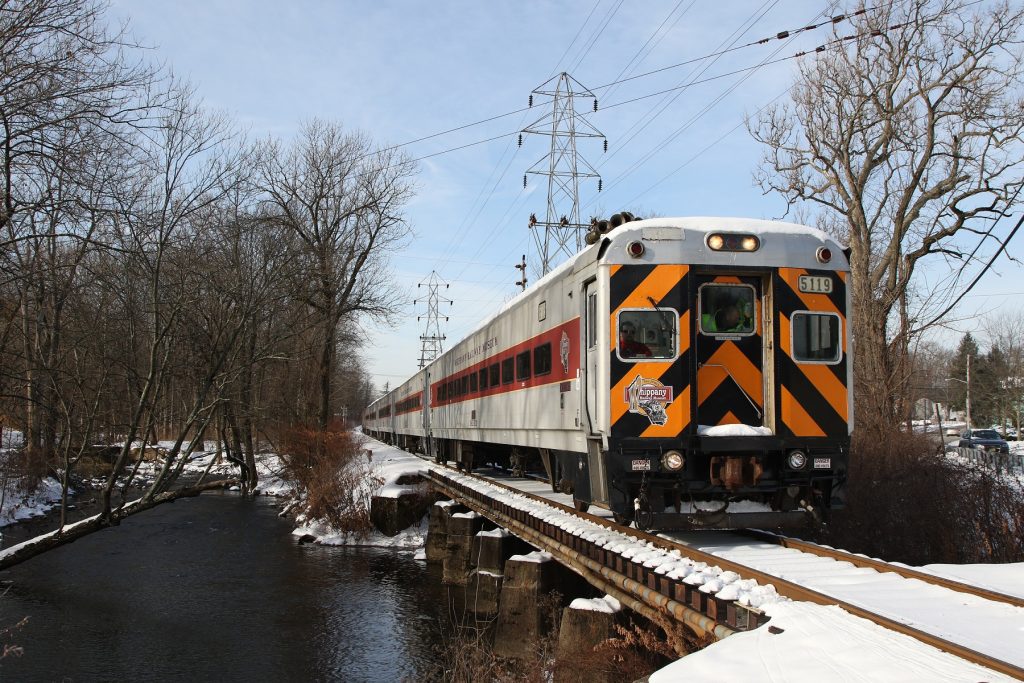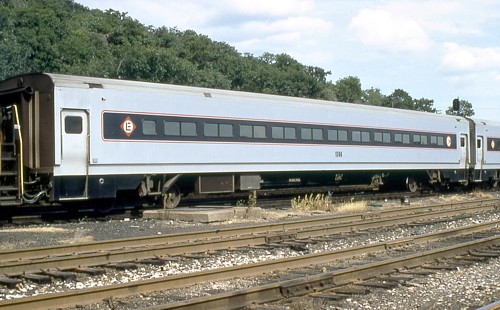
Erie Lackawanna/NJ DOT Comet I Commuter Coaches NOS. 1753, 1786, 1803 and Cab Car NO. 1519
Northern New Jersey commuters on the Erie and Lackawanna Railroads spent decades riding to work in early-20th-century-vintage Pullman Green-painted coaches. The Erie had their “Stillwell”-design steel coaches, with their unique roofline, while the Lackawanna had their open-vestibule “Boonton” car designs, often referred to as “Wyatt Earp” cars, in deference to their “old west” appearance.
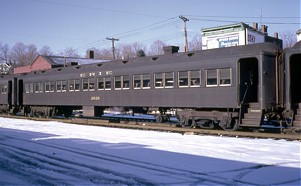
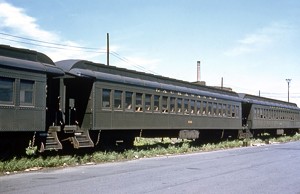
When the Erie and Lackawanna railroads merged in 1960 to form the Erie-Lackawanna Railroad (EL), the two fleets of cars became intermingled and proceeded to carry commuters through the 1960’s out of Hoboken Terminal. By the end of the decade, the diesel commuter train fleet was becoming quite aged.
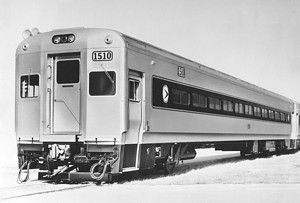
Due to the large losses in operating money-hungry commuter services, the State of New Jersey’s Department of Transportation (NJDOT) funded the purchase of much-needed replacement equipment, both in the form of a fleet of 32 General Electric U34CH diesel locomotives and a fleet of 155 new commuter cars. These coaches, built by car builder Pullman-Standard and dubbed “Dieseliners” by the manufacturer, were constructed of brushed aluminum, and featured a striking paint scheme with a dark blue band surrounded by a bright red pinstripe, making them quite different from any other cars in Hoboken commuter service.
All these cars had electric power provided to them for lighting, heating and air-conditioning via a generator from the diesel locomotive, whereas the old Lackawanna and Erie coaches used batteries and/or generators driven off the car’s axles.
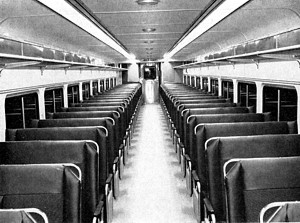
The order consisted of 110 coaches, 10 “snack bar” cars, and 35 “cab cars”. These cab cars were outfitted with a control stand and a seat at one end of the car so that the engineer could operate the train from either the locomotive on one end, or the cab car on the other end, a method of operation that was dubbed “push-pull”. This precluded the need to turn the train at the end of their runs. The cab car communicated back to the locomotive via an electrical connection that ran through all the coaches in the train. This “push-pull” concept was new to the Northeast US, although it was first proven by the Chicago, Burlington & Quincy Railroad on their Chicago commuter lines.
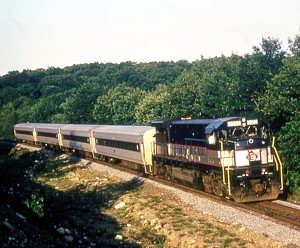
EL’s cab cars were delivered in two batches: Numbers 1500-1523, arriving in 1971, and numbers 1524-1534, arriving in 1973. Once the cab cars went into service, the EL was still slightly paranoid about the safety of running a locomotive from several cars away, and for the first few weeks a second “safety” engineer would be sitting in the locomotive while the main engineer was operating from the cab car in “push” mode. After it was obvious that operation from a cab car was completely safe and reliable, the EL dispensed with the second engineer.
In 1970, the first of the GE U34CH locomotives arrived on the property. Until the commuter cars arrived, the locomotives were stored or pressed into freight service. Finally, in 1971 the coaches and cab cars arrived from Pullman-Standard, and the train sets went to work.
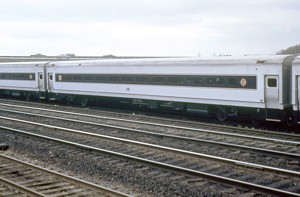
After the Conrail takeover in 1976, the cars and locomotives continued to wear the EL/NJDOT scheme. NJ TRANSIT (NJT) took over all commuter operations in the early 1980’s, and soon afterwards the commuter cars were stripped of their EL and NJDOT markings, to be replaced with the tri-colored stripes of NJT. NJ TRANSIT liked the Pullman-Standard design enough to order more from passenger car building successor Bombardier, and the design, slightly revised, were delivered as “Comet II” coaches and cab cars, named to honor the former Central Railroad of New Jersey lines they were purchased to run on. The original Pullman-Standard cars, built for the Erie Lackawanna, were then designated “Comet I” cars to demonstrate the lineage.
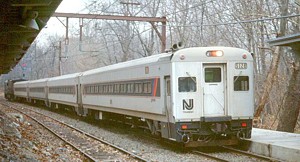
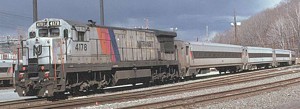
After being rebuilt in the late 1980’s, these cars survived into the 21st Century in daily commuter service until being retired in 2005 and replaced with newer equipment. A 34-year service life compares favorably with the Stillwell and Boonton cars they themselves replaced, which were also long-lived, with a service record of 50 years.
Upon the retirement of the Comet I coaches in early 2006 NJ TRANSIT donated three of them to the Whippany Railway Museum. These cars were among those which had retained their low doors, thus keeping their original as-built exterior appearance.
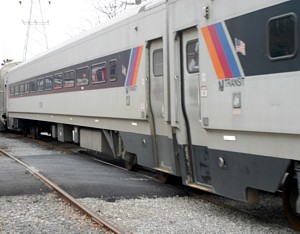
To honor the car’s original Erie Lackawanna heritage, the Museum restored the cars as-delivered numbers and repainted the exteriors to match the original Erie Lackawanna passenger scheme of maroon lettering, a maroon window band and yellow band edging. An Erie Lackawanna herald was also applied on one end, with a Whippany Railway Museum herald on the other end. Finally, each car was also given a name to go with its number, to honor towns that the Morristown & Erie Railway travels through. The cars are named MORRISTOWN, HANOVER and ROSELAND. The car’s rebuilt 3-and-2 seating was retained for passenger capacity.
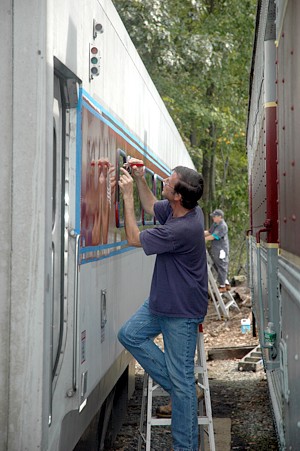
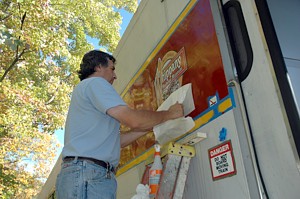
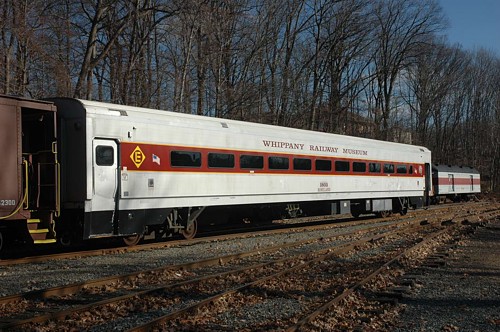
In late 2010, NJ TRANSIT again assisted the Museum by donating retired Comet I Cab Car No. 5119 as a most welcome addition to its fleet of historic cars. The Cab Car will eventually enable the Museum to operate in “push-pull” style, the way these cars were originally intended to run. First used on the Museum’s 2011 Easter trains, the Cab Car was repainted in 2013 into the same maroon and yellow EL-inspired scheme as the three standard coaches and was given the name ESSEX FELLS.
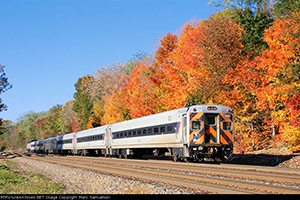
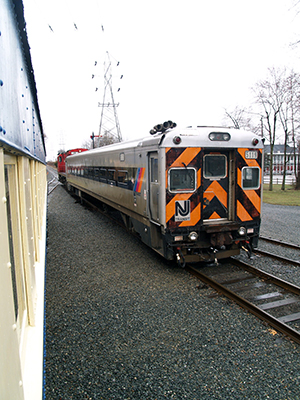
An unusual feature of the Museum’s Cab Car is the striking “tiger” (or Halloween) safety stripes that NJT applied to the cab end of the car. The orange and black stripes are a hint that this particular car was at one time used by NJT in their Atlantic City, NJ service. The stripes were a visual daytime warning device to alert oncoming motorists that a train was fast approaching a grade crossing.
Today you can experience these historic, restored coaches on our Easter Bunny Express.
